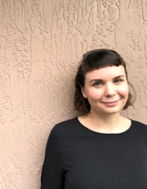event
Unraveling Microbial Life in the Seabed—from Complex Communities to Single Cells
Primary tabs
GA Tech Schools of Biology and Earth and Atmospheric Science Present Dr. Caitlin Petro, Max Planck Institute for Marine Microbiology and Aarhus University
Unraveling Microbial Life in the Seabed—from Complex Communities to Single Cells
Marine sediments cover more than two-thirds of the Earth’s surface and harbor the largest reservoir of organic carbon on the planet. These sediments are a massive microbial habitat, densely populated by diverse communities of bacteria and archaea which collectively account for more than half of all cells in the oceans.
Burial into the sediment column can isolate microorganisms from the surface world for hundreds to millions of years, cutting them off from fresh detrital organic matter and subjecting them to severe energetic limitations that increase with sediment depth.
My research has explored microorganisms in the seabed from a broad ecological perspective, aiming to understand how the uniquely isolated and energy-limited subseafloor shapes the structure and activity of resident microbial communities.
A key objective has been to understand how these microbial communities assemble within the seabed. To accomplish this, we’ve analyzed patterns of subseafloor microbial community structure on a global scale as well as within the well-studied coastal sediments of Aarhus Bay (Denmark). By tracing microbial lineages across sediment depths, we can examine population dynamics associated with the burial of microbial communities over time.
In addition to understanding how whole communities operate in the subseafloor, we are equally interested in exploring subsurface life at the single-cell level. This facet of our research has centered on understanding the full range of microbial activity and growth in the sediment by measuring the activities of single cells. Single-cell activity was determined by stable isotope probing with heavy water (2 H2O) combined with nanoscale secondary ion mass spectrometry (NanoSIMS). With this approach, we found that cells in the seabed grow at extremely variable rates, with even the most active cells exhibiting exceedingly long generation times.
We are intrigued by these microorganisms’ ability to maintain such low activity and still survive throughout burial for hundreds to thousands of years. As such, we are currently working towards developing a protocol aimed at targeting and isolating specific subsurface taxa from the seabed for whole genome sequencing. Such an approach could allow us to explore adaptations to life in the subsurface without having to grow pure cultures of predominant subseafloor lineages, which has been unsuccessful to date.
Status
- Workflow Status:Published
- Created By:nlawson3
- Created:09/05/2018
- Modified By:nlawson3
- Modified:09/05/2018
Categories
Keywords
Target Audience

